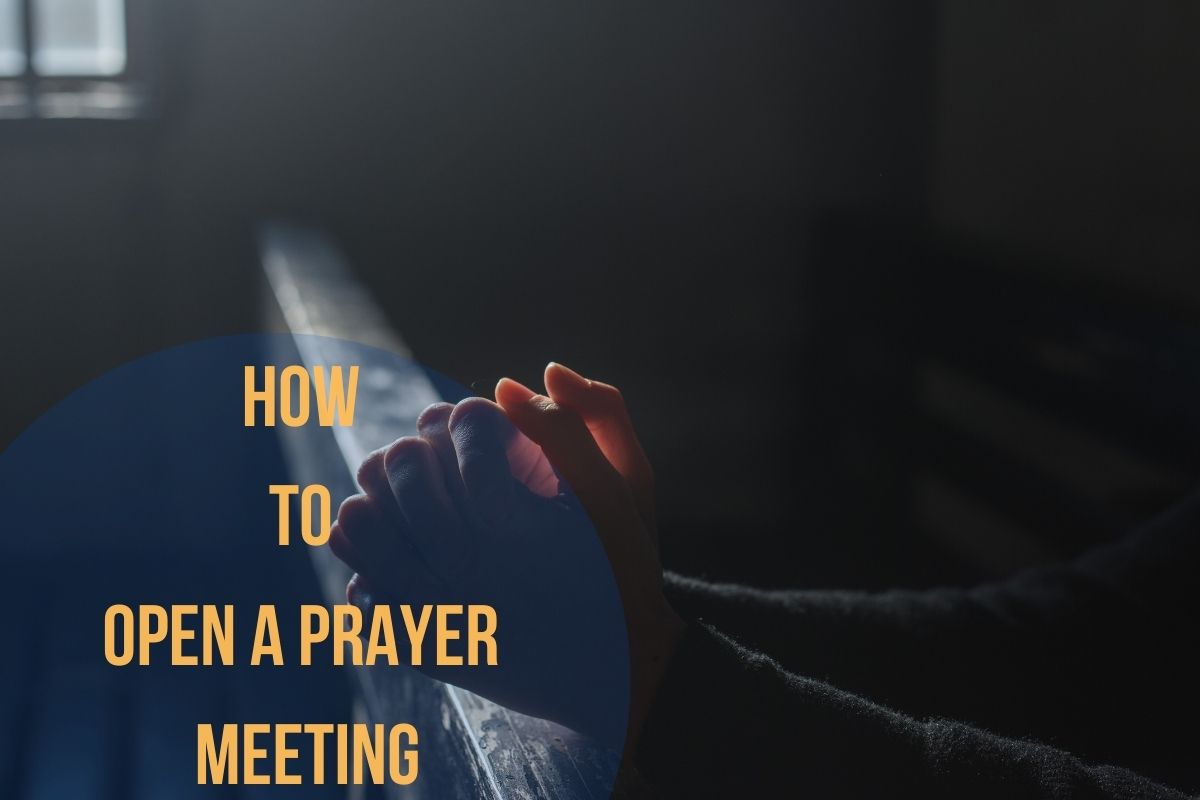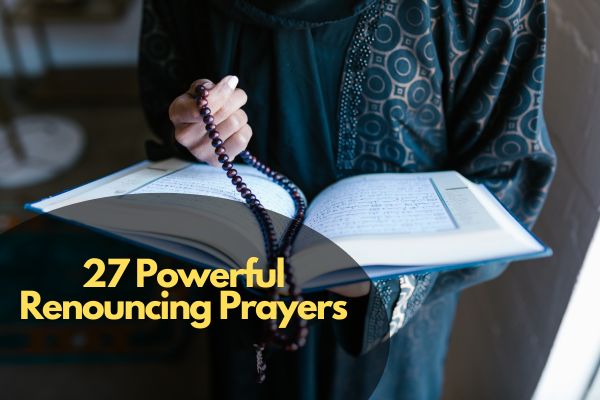In today’s fast-paced world, prayer meetings provide a valuable opportunity for individuals to come together and seek spiritual guidance, support, and connection.
How To Open A Prayer Meeting effectively sets the tone for the entire gathering, creating an atmosphere of reverence and unity.
This article will guide you through the process of opening a prayer meeting, offering practical tips and insights to help you create a meaningful and impactful experience.
1. How To Open A Prayer Meeting
Opening a prayer meeting is a spiritual and sacred endeavor that varies depending on your religious tradition or personal beliefs. Below are some general steps to help you open a prayer meeting, but keep in mind that the specific format and content of your prayer meeting may differ based on your faith and the purpose of the gathering:
Set the Date, Time, and Location
Decide on a suitable date, time, and location for your prayer meeting. Make sure it is convenient for participants and that the space is comfortable and conducive to prayer.
Invite Participants
Reach out to individuals who you believe would like to join the prayer meeting. This can be done in person, through phone calls, text messages, emails, or through your religious institution.
Prepare an Agenda
Determine the purpose and format of the prayer meeting. Will it be a general gathering for prayer, or will it focus on specific topics or needs? Create an agenda that outlines the order of events, including prayers, readings, and any activities or discussions.
Gather Necessary Supplies
Depending on your tradition and agenda, you may need religious texts, candles, incense, prayer mats, hymn books, or other items. Ensure that you have everything ready in advance.
Create a Peaceful Atmosphere
Before participants arrive, set the ambiance by dimming lights, playing soft instrumental music (if desired), and arranging seating in a circle or any other preferred arrangement. This will help create a peaceful and reflective environment.
Welcome and Introduction
Begin the prayer meeting by welcoming everyone and offering a brief introduction. You can mention the purpose of the meeting, any special intentions, and express gratitude for everyone’s presence.
Opening Prayer
Start the meeting with an opening prayer. This can be a traditional prayer or something you compose to set the tone for the gathering.
Scripture Reading or Inspirational Passage
Consider reading a relevant scripture passage or an inspirational reading from a religious text. This can provide a focal point for the meeting and offer guidance.
Prayer Requests and Intentions
Invite participants to share their prayer requests or intentions. This can be done verbally or through written submissions. Ensure that everyone has the opportunity to contribute.
Group Prayers
Engage in group prayers. You can assign different prayers to different participants or take turns leading the group in prayer.
Reflection and Discussion
Depending on the agenda, you may have a discussion or reflection on the readings, prayers, or the chosen theme of the meeting.
Closing Prayer
Conclude the prayer meeting with a closing prayer, expressing gratitude and asking for guidance and blessings.
Announcements and Next Steps
If there are any important announcements or future meetings, share them with the group.
Refreshments and Fellowship (Optional)
You may choose to offer refreshments and allow time for participants to socialize and build community.
Closing Remarks
Offer a final word of thanks and encouragement to the participants.
Dismissal
End the meeting by dismissing the participants. This can be done with a simple “Amen” or a traditional phrase from your faith.
2. Importance of Prayer Meetings
Prayer meetings hold immense significance in the lives of believers. They offer a dedicated time and space for individuals to communicate with a higher power, express gratitude, seek guidance, and intercede for others. These gatherings foster a sense of community, allowing participants to share their burdens, joys, and spiritual journeys. Opening a prayer meeting with intentionality and purpose enhances the overall experience and encourages
3. Preparing for a Prayer Meeting
Choosing a Suitable Venue
When planning a prayer meeting, it is important to select a venue that provides a quiet and conducive environment for prayer. Consider choosing a location that is free from distractions and allows participants to focus their thoughts and intentions.
Setting the Date and Time
Choose a date and time that works well for the majority of participants. Consider their schedules and availability to ensure maximum attendance. It is also helpful to establish a regular meeting schedule to foster consistency and commitment.
Inviting Participants
Send out invitations or announcements to individuals who may be interested in attending the prayer meeting. Use various communication channels such as email, social media, or word of mouth to reach a wider audience. Encourage participants to invite others who may benefit from the gathering.
4. Structuring a Prayer Meeting
Opening the Meeting
Begin the prayer meeting with a warm welcome and an opening prayer. This sets the tone for the gathering and invites participants to enter into a mindset of prayer and reflection.
Setting the Tone
Create a peaceful and reverent atmosphere by incorporating elements such as soft lighting, calming music, or visual aids. This helps participants to focus their minds and hearts on prayer.
Sharing Prayer Requests
Allocate time for participants to share their prayer requests. This allows individuals to express their needs and concerns, fostering a sense of support and empathy within the group.
Engaging in Worship
Include a time of worship through singing or listening to worship songs. This helps to uplift spirits, create a sense of unity, and prepare hearts for prayer.
Praying Together
Encourage participants to pray together as a group. This can be done through spontaneous prayers or by using prayer prompts or guided prayers. Allow individuals to take turns leading prayers or invite a designated prayer leader.
Reading and Reflecting on Scripture
Incorporate the reading and reflection of relevant scripture passages. This helps to ground the prayer meeting in biblical truth and provides inspiration for prayer topics.
Closing the Meeting
Conclude the prayer meeting with a closing prayer and words of encouragement. Express gratitude for the time spent together and encourage participants to continue their prayer journey throughout the week.
5. Creating a Prayerful Atmosphere
Choosing Appropriate Music
Select worship songs or instrumental music that aligns with the theme and purpose of the prayer meeting. Consider using songs that encourage contemplation, reflection, and a sense of awe.
Creating a Quiet Space
Ensure that the prayer meeting venue provides a quiet and peaceful environment. Minimize external distractions and create a space where participants can focus their thoughts and engage in prayer without interruptions.
Using Visual Aids
Enhance the prayer meeting experience by incorporating visual aids such as images, symbols, or artwork that evoke a sense of spirituality and contemplation. These visual elements can help participants connect with their prayers on a deeper level.
6. Encouraging Active Participation
Providing Prayer Guides
Offer prayer guides or prompts to participants to assist them in formulating their prayers. These guides can include specific prayer topics, scriptures, or prompts for personal reflection.
Allowing Time for Silent Reflection
Allocate moments of silence during the prayer meeting to allow participants to reflect on their own thoughts, feelings, and prayers. This provides an opportunity for personal introspection and connection with the divine.
Facilitating Group Discussions
Encourage participants to engage in group discussions or small group activities related to prayer. This fosters a sense of community and allows individuals to learn from one another’s experiences and perspectives.
7. Nurturing a Spirit of Unity
Emphasizing Respect and Love
Create an environment where participants feel respected, valued, and loved. Emphasize the importance of treating one another with kindness, empathy, and understanding, regardless of differences in beliefs or backgrounds.
Fostering Inclusivity
Ensure that the prayer meeting is inclusive and welcoming to individuals from diverse backgrounds. Celebrate and embrace the richness of different cultures, traditions, and expressions of faith.
Encouraging Diversity of Prayer Styles
Acknowledge and appreciate the various prayer styles and preferences within the group. Encourage participants to explore different forms of prayer, such as silent prayer, spoken prayer, or written prayers, to foster a sense of individuality and authenticity.
Conclusion
Opening a prayer meeting is a sacred and meaningful endeavour. By following the steps outlined in this article, you can create a prayerful atmosphere that fosters unity, connection, and spiritual growth. Remember to approach each prayer meeting with intentionality, love, and a desire to seek the divine. May your prayer meetings be a source of inspiration, comfort, and transformation for all who attend.
FAQs
1. How long should a prayer meeting typically last?
A prayer meeting can vary in length depending on the preferences and availability of the participants. It is common for prayer meetings to last anywhere from 1 to 2 hours, but ultimately, the duration should be determined by the needs and dynamics of the group.
2. Can I open a prayer meeting without a designated leader?
Yes, a prayer meeting can be opened by any participant who feels led to do so. It is not necessary to have a designated leader, as long as the opening prayer and welcoming remarks are conducted with sincerity and reverence.
3. How often should prayer meetings be held?
The frequency of prayer meetings can vary depending on the needs and availability of the participants. Some groups may choose to meet weekly, while others may meet bi-weekly or monthly. It is important to establish a consistent schedule that works well for the majority of participants.
4. Can I incorporate other activities into a prayer meeting?
While the primary focus of a prayer meeting is prayer, it is possible to incorporate other activities that enhance the overall experience. These activities can include scripture readings, worship, group discussions, or even acts of service. However, it is important to ensure that these activities align with the purpose and intention of the prayer meeting.
5. How can I encourage shy participants to actively participate in a prayer meeting?
Creating a safe and welcoming environment is key to encouraging shy participants to actively participate. Provide opportunities for individuals to share their thoughts or prayers in a non-threatening manner, such as through written prayer requests or small group discussions. Emphasize that there is no pressure to speak publicly and that all contributions are valued.






